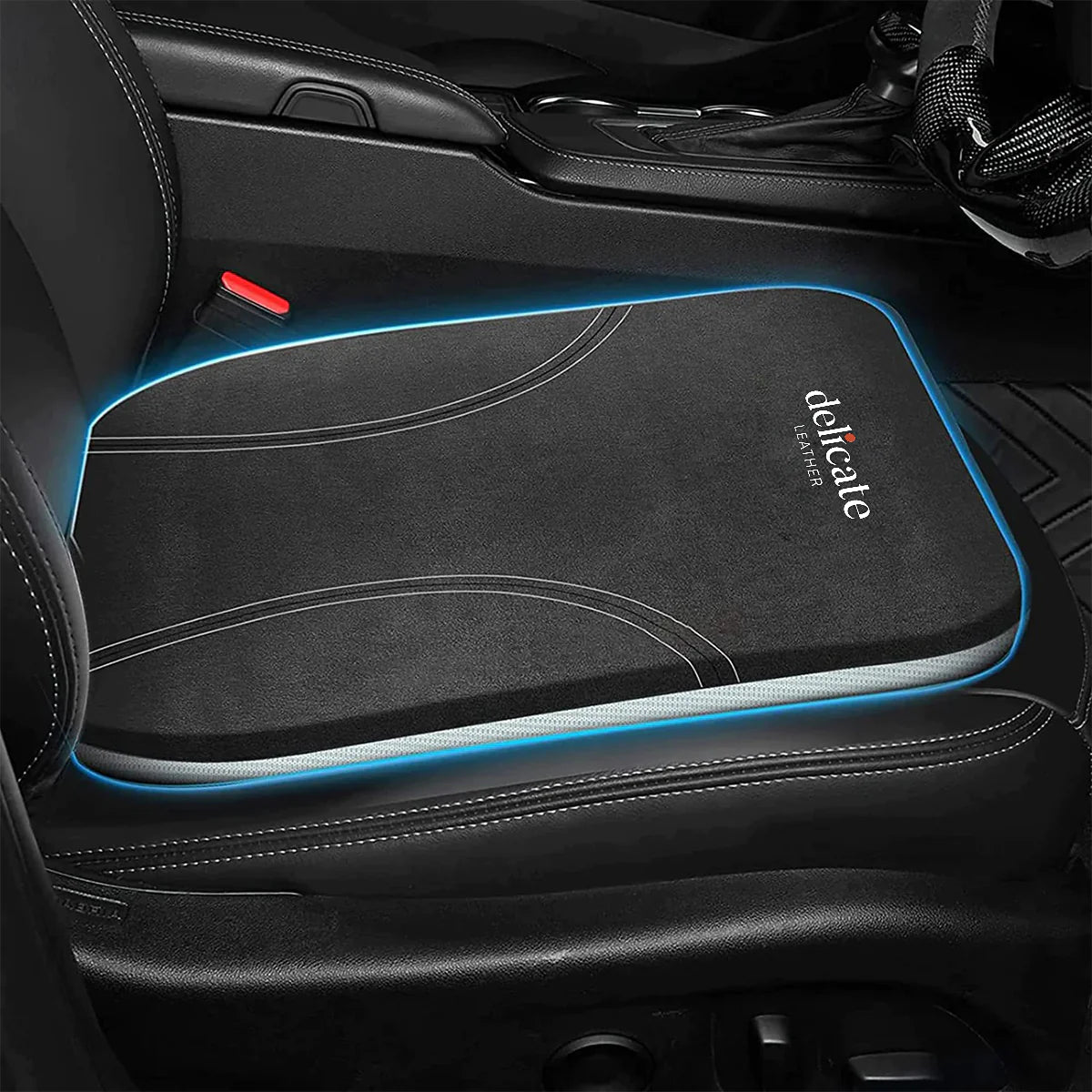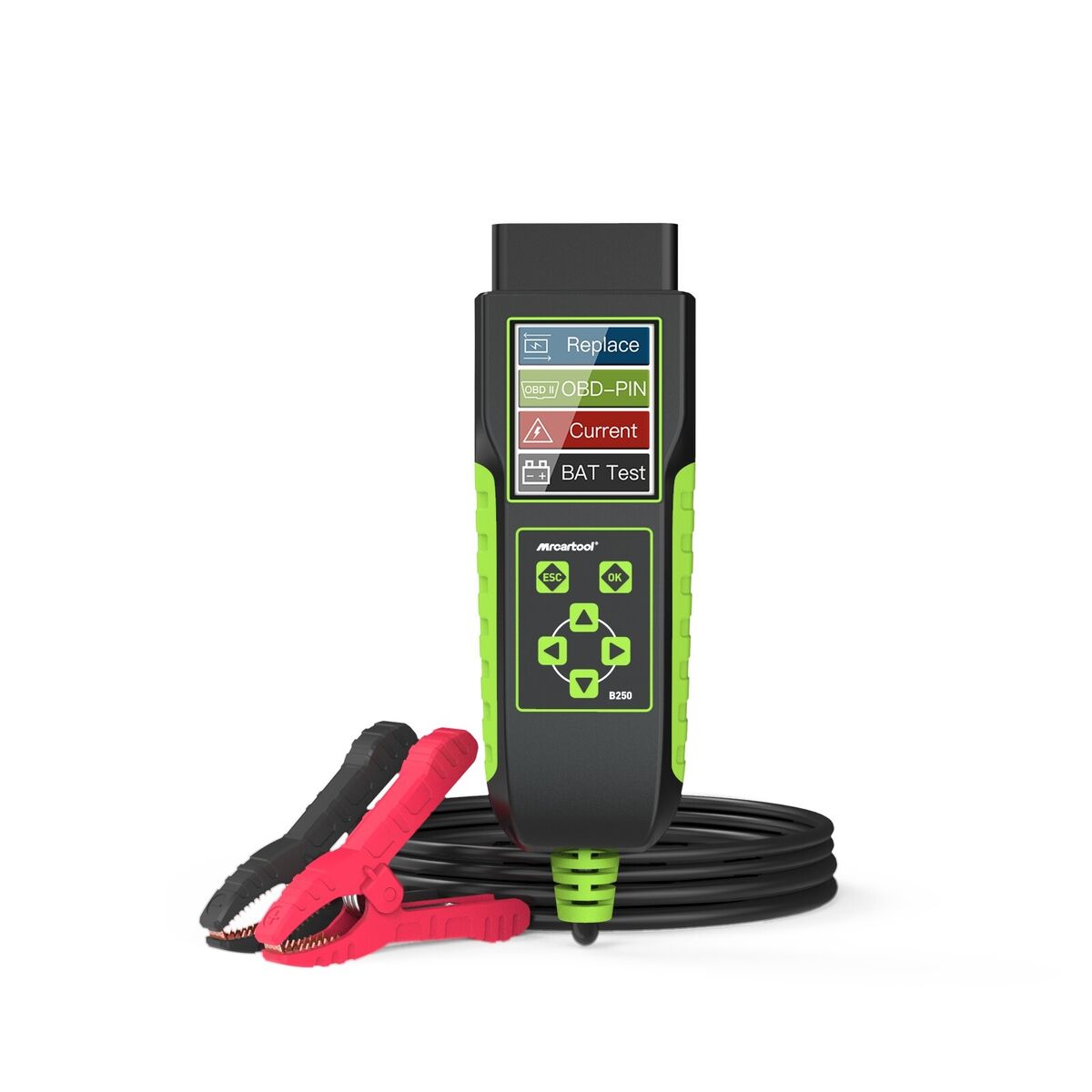Premium Memory Foam Car Seat Cushions for Ultimate Comfort & Support
Introduction
Start with an engaging introduction that highlights the common discomfort and health issues associated with prolonged sitting in car seats. Introduce the memory foam car seat cushion as a solution.
Section 1: The Importance of Comfortable Seating in Cars
Subsection A: Challenges of Long-Distance Driving or Commuting
Discuss how prolonged sitting can lead to back pain, sciatica, and other health issues. Use statistics or research to back up your points.
Subsection B: The Role of Seat Cushions in Enhancing Comfort
Explain how a good seat cushion can mitigate these problems, focusing on ergonomics and support.
Section 2: Features and Benefits of Memory Foam Car Seat Cushions
Subsection A: Memory Foam Technology
Detail how memory foam works, emphasizing its ability to conform to the body's shape for personalized support.
Subsection B: Key Features to Look For
List the features that make a memory foam car seat cushion stand out, such as non-slip design, breathability, and durability.
Section 3: Buyer’s Guide to Choosing the Right Cushion
Offer advice on selecting the right cushion, considering factors like cushion size, material, and maintenance. Include a call-to-action encouraging readers to consider their specific needs and preferences.
Section 4: Installation and Maintenance
Provide simple instructions on how to install the cushion and tips for maintaining it to ensure longevity. Emphasize ease of use and care as additional benefits.
Section 5: Real-World Success Stories
Share testimonials or case studies from users who have experienced significant improvements in comfort and driving experience. This section adds credibility and relatability.
Conclusion
Summarize the key points made throughout the article, reinforcing the importance of a quality memory foam car seat cushion for anyone who spends a lot of time driving. Close with a strong call-to-action, encouraging readers to prioritize their comfort and health.
Section 6: Comparison With Other Types of Car Seat Cushions
Subsection A: Memory Foam vs. Gel Cushions
Discuss the differences between memory foam and gel cushions, highlighting the unique benefits of each. This comparison can help readers understand why they might prefer memory foam over gel for specific needs.
Subsection B: Traditional Cushions vs. Ergonomic Memory Foam Designs
Explain how traditional cushions may not offer the same level of support and comfort as ergonomic memory foam designs, which are crafted based on orthopedic recommendations.
Section 7: Health Benefits of Using a Memory Foam Car Seat Cushion
Elaborate on the health benefits, such as improved circulation, reduced risk of pressure sores, and alleviation of lower back pain. Cite studies or expert opinions to lend credibility to these claims.
Section 8: The Science Behind Memory Foam
Dive deeper into the technology of memory foam, including its history, how it was developed by NASA, and why it's considered superior for providing support and comfort. This section can appeal to readers interested in the technological and scientific aspects.
Section 9: Customization Options
Discuss the availability of customization options for memory foam car seat cushions, such as different sizes, shapes, and covers, to meet the diverse needs and preferences of users. Highlight how customization can enhance the user experience.
Section 10: Environmental Considerations
Address any environmental concerns associated with memory foam production and disposal. Offer insights into eco-friendly memory foam options, underscoring the brand's commitment to sustainability.
Section 11: FAQs
Include a Frequently Asked Questions section to answer common queries about memory foam car seat cushions. This can cover aspects such as lifespan, warranty, return policy, and how to choose the best cushion for specific vehicle types or seating issues.
Section 12: How to Maximize Comfort on Long Drives
Provide practical tips beyond just using a seat cushion, like adjusting the seat position, taking regular breaks to stretch, and maintaining a comfortable cabin temperature. This holistic approach to comfort can further engage readers.
Section 13: Ergonomic Benefits and Posture Correction
Subsection A: The Role of Ergonomics in Driving
Discuss the significance of ergonomic principles in car seat design and how they contribute to safer and more comfortable driving experiences. Highlight how memory foam cushions align with these principles.
Subsection B: Posture Correction Techniques
Offer readers advice on correcting their posture with the help of memory foam cushions, emphasizing long-term benefits for spinal health and overall well-being.
Section 14: Memory Foam Cushion Care and Maintenance
Provide detailed instructions on how to properly care for and maintain a memory foam car seat cushion. Include tips on cleaning, drying, and storing the cushion to extend its life and maintain hygiene.
Section 15: The Psychological Impact of Comfortable Driving
Subsection A: Stress Reduction
Explore how improving seat comfort can reduce stress and anxiety levels during driving, particularly over long distances or in heavy traffic.
Subsection B: Enhanced Focus and Alertness
Discuss the link between physical comfort and mental alertness. Explain how a comfortable driving position can help drivers stay more focused and alert, potentially reducing the risk of accidents.
Section 16: Legal and Insurance Considerations
Examine whether using ergonomic aids like memory foam cushions can have implications for vehicle insurance policies or compliance with local road safety regulations.
Section 17: Innovative Trends in Car Seat Comfort
Highlight emerging trends and innovations in car seat technology, such as smart cushions that adjust automatically to the driver's posture or cushions equipped with temperature control for added comfort.
Section 18: Integrating Memory Foam Cushions with Overall Vehicle Ergonomics
Offer guidance on achieving the best ergonomic setup in a vehicle, considering seat adjustments, steering wheel position, and the strategic placement of a memory foam cushion for optimal support and comfort.
Section 19: Expert Opinions and Endorsements
Include quotes or endorsements from chiropractors, orthopedists, or ergonomic experts on the benefits of memory foam car seat cushions. This can add authority and credibility to your article.
Section 20: Next Steps After Purchase
Guide readers on what to do after purchasing a memory foam car seat cushion, such as adjusting their driving habits, monitoring their posture, and evaluating the cushion’s impact on their comfort and health over time.
Section 21: Addressing Common Myths and Misconceptions
Subsection A: Debunking Myths About Memory Foam
Tackle prevalent myths surrounding memory foam, such as issues related to heat retention or chemical odors, by presenting factual information and highlighting advancements in memory foam technology that address these concerns.
Subsection B: Clarifying Misconceptions About Car Seat Ergonomics
Address common misconceptions about car seat ergonomics, such as the idea that a firmer seat is always better. Use evidence-based information to explain how personalized support, like that offered by memory foam, can be more beneficial.
Section 22: Memory Foam and Climate Considerations
Discuss how different climates can affect the performance of memory foam cushions, offering advice on choosing the right cushion for hot or cold environments. Highlight innovations in memory foam technology that regulate temperature for comfort in any weather.
Section 23: Accessibility and Inclusivity in Vehicle Comfort
Subsection A: Solutions for Drivers with Specific Needs
Explore how memory foam car seat cushions can be part of an inclusive approach to vehicle comfort, catering to drivers with disabilities, chronic pain, or other specific health conditions that affect their driving experience.
Subsection B: Customizable Options for Varied Body Types
Emphasize the importance of considering diverse body types in ergonomic design, showcasing how memory foam cushions can be customized or selected to fit different body shapes and sizes optimally.
Section 24: Advanced Memory Foam Technologies
Delve into the latest advancements in memory foam technology, such as gel-infused memory foam or eco-friendly production methods. Describe how these innovations enhance the comfort, sustainability, or health benefits of car seat cushions.
Section 25: Beyond the Car: Versatility of Memory Foam Cushions
Illustrate the versatility of memory foam cushions by showcasing their use in other settings, such as office chairs, flights, or home seating. This section can broaden the appeal of the product by highlighting its multifunctionality.
Section 26: The Environmental Impact of Memory Foam Production
Subsection A: Sustainable Practices in Memory Foam Manufacturing
Detail the efforts being made in the memory foam industry to adopt more sustainable and eco-friendly manufacturing processes. Discuss the use of renewable resources, reduced emissions, and recycling initiatives.
Subsection B: How Consumers Can Make Eco-Conscious Choices
Provide guidance on how consumers can identify and choose memory foam products that are made with eco-friendly practices, including certifications to look for and questions to ask manufacturers.
Section 27: Cutting-Edge Research in Seating Ergonomics
Highlight ongoing research and studies in the field of seating ergonomics, particularly those that pertain to driving comfort and the prevention of musculoskeletal disorders. This section can underscore the scientific backing behind ergonomic designs and the potential for future innovations.
Section 28: The Role of Smart Technology in Enhancing Seat Comfort
Subsection A: Integration of Smart Sensors
Explore how smart technology, including sensors embedded in memory foam cushions, can monitor and adjust to a driver’s posture in real time, promoting optimal alignment and comfort.
Subsection B: Connectivity and Personalization
Discuss the potential for memory foam car seat cushions to connect with smartphone apps or vehicle systems, allowing users to personalize settings for firmness, temperature, and even massage features based on their preferences and health profiles.
Section 29: Addressing the Needs of Professional Drivers
Tailor content to the unique challenges faced by professional drivers, such as truckers or taxi drivers, who spend extended periods on the road. Offer specialized advice on selecting memory foam cushions that cater to their intensive use, including durability, support, and fatigue reduction.
Section 30: Global Trends in Car Seat Comfort
Provide an overview of how different cultures and countries prioritize car seat comfort, including any unique innovations or preferences. This global perspective can offer readers insights into a variety of approaches to enhancing driving comfort.
Section 31: Navigating Regulatory and Safety Standards
Subsection A: Compliance with Vehicle Safety Standards
Delve into how memory foam car seat cushions fit within the broader context of vehicle safety standards. Discuss certifications or regulations that manufacturers might adhere to, ensuring their products do not compromise vehicle safety features or airbag deployment.
Subsection B: Impact on Insurance Policies
Explore whether the use of aftermarket seat cushions like those made of memory foam could have implications for car insurance policies or claims, providing essential information for consumers to consider.
Section 32: The Psychology of Comfort and Driving Performance
Subsection A: Comfort's Influence on Driver Behavior
Investigate psychological studies that link seating comfort with driver behavior, mood, and performance. This can include how enhanced comfort can reduce aggression or improve focus and decision-making while driving.
Subsection B: Designing for Emotional Well-being
Discuss the principles of designing car interiors and accessories, such as memory foam seat cushions, with an emphasis on promoting positive emotional states, reducing stress, and enhancing overall well-being during commutes.
Section 33: Future Innovations in Seating Materials and Technologies
Subsection A: Beyond Memory Foam
Anticipate future materials and technologies that could revolutionize car seat comfort. Mention research into bio-based foams, smart fabrics that adjust to body temperature or posture, and even seating designs inspired by biometrics and AI predictions.
Subsection B: Integration with Vehicle Technology Systems
Speculate on how future car seat cushions might integrate more deeply with vehicle technology systems, offering not just comfort but also health monitoring features, such as heart rate or stress level detection, contributing to safer driving.
Section 34: Global Market Trends and Consumer Preferences
Provide an analysis of global market trends in car seat cushions, noting differences in consumer preferences across regions. This could include the popularity of memory foam in various climates, cultural attitudes towards car interior customization, and emerging markets for ergonomic driving accessories.
Section 35: Personalization and DIY Solutions
Subsection A: Custom DIY Memory Foam Cushions
Guide readers through creating their own memory foam car seat cushions for a fully personalized approach. This can appeal to DIY enthusiasts and those looking for highly specific solutions not available on the market.
Subsection B: The Maker Movement and Car Customization
Connect the trend of personal car seat customization with the broader maker movement, highlighting communities, resources, and projects where individuals share their modifications and innovations for comfort and ergonomics.
Section 36: Anticipating Changes in Automotive Design Standards
Subsection A: Autonomous Vehicles and Seating Comfort
As autonomous vehicles become more prevalent, explore how the role of seating comfort might evolve when the need for active driving diminishes. Discuss potential shifts towards living space concepts within vehicles, where comfort and ergonomics take on new dimensions and priorities.
Subsection B: Impact of Shared Mobility Trends
Analyze how the rise in shared mobility solutions, such as car-sharing and ride-hailing services, might influence consumer expectations for car seat comfort, including the demand for adjustable and hygienic seat cushions adaptable to multiple users.
Section 37: The Intersection of Health, Wellness, and Car Seating
Subsection A: Holistic Health Approaches
Examine how an increasing societal focus on holistic health and wellness could integrate with car seat design, potentially leading to cushions that not only support physical comfort but also contribute to mental and emotional well-being through materials and designs that reduce stress and enhance relaxation.
Subsection B: Wearable Technology Integration
Speculate on the future integration of wearable technology with car seat cushions, where sensors embedded in cushions and wearables communicate to adjust seating positions dynamically, optimize comfort settings based on physiological data, and even monitor the driver's health status.
Section 38: Sustainability and Ethical Manufacturing in the Memory Foam Industry
Discuss the future of sustainability in the memory foam industry, highlighting potential advancements in bio-based foams, recycling initiatives, and ethical manufacturing practices. Explore how consumer demand for environmentally friendly products could shape the development and marketing of car seat cushions.
Section 39: Customization and Personalization Technologies
Subsection A: AI and Machine Learning
Dive into how AI and machine learning could revolutionize the customization of car seat cushions, offering personalized recommendations based on body shape, weight distribution, and preferred comfort settings derived from user data analysis.
Subsection B: 3D Printing and Modular Designs
Consider the impact of 3D printing and modular design on car seat cushions, allowing for unprecedented levels of customization and on-demand manufacturing of cushions tailored to individual specifications.
Section 40: Global Shifts and Cultural Influences on Car Comfort
Explore how global shifts, such as urbanization, aging populations, and cultural influences, might affect the design and functionality of car seat cushions. This section could consider the varying needs of different demographics and the potential for cross-cultural exchange of ideas in automotive comfort design.



